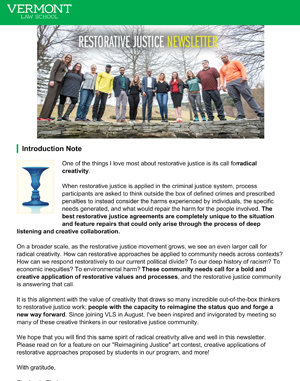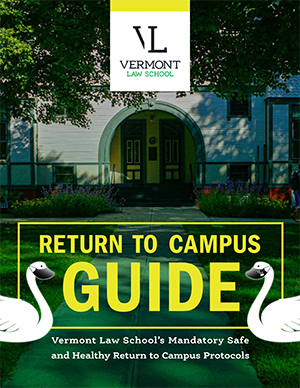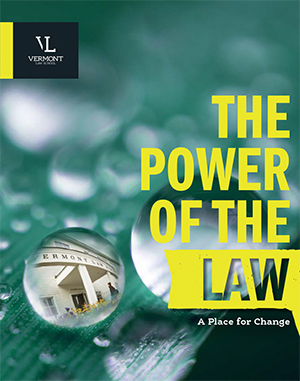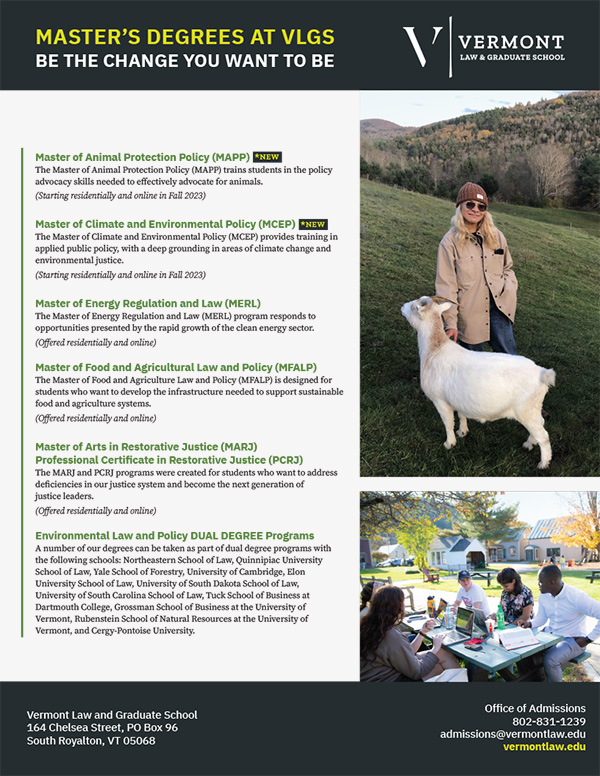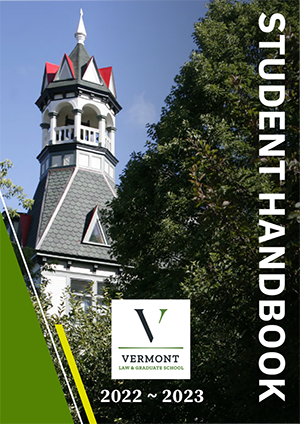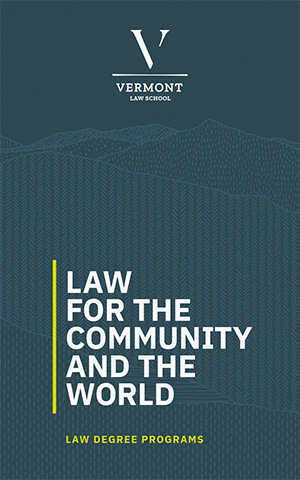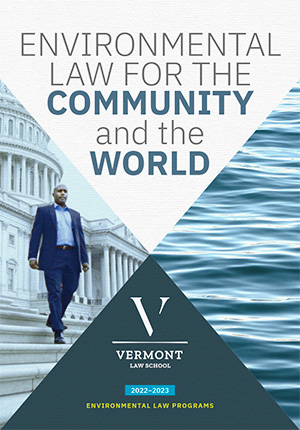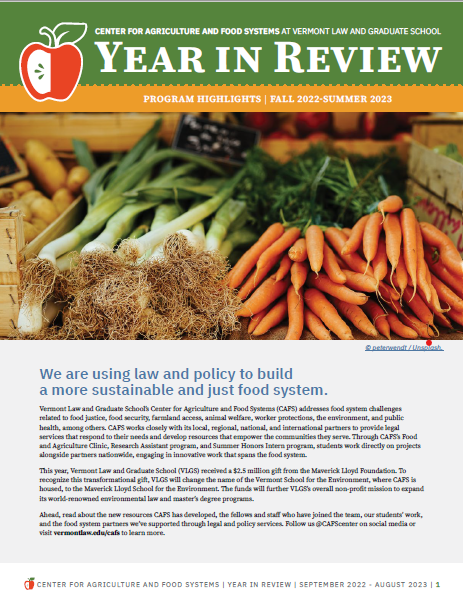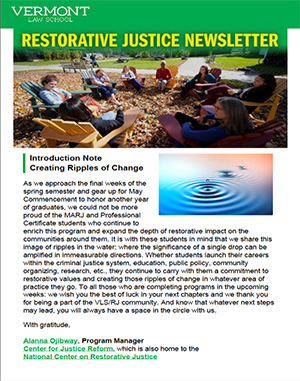The Vermont Journal of Environmental Law (VJEL) at Vermont Law School presents articles on the environmental costs of expedited oil and gas development, conflict over water access in Central Asia, and other critical environmental issues in its most recent publication, Volume 18, Issue 3, available online.
"We are pleased to share this scholarship not only with the environmental law community but with all who seek to develop solutions to address the environmental issues we face in the United States and globally," said VJEL Editor-in-Chief Rebecca Blackmon JD'17. "Thank you to our writers and editors for their research and commitment to presenting these issues to a wider audience."
The journal opens with "NEPA and the Energy Policy Act of 2005 Statutory Categorical Exclusions: What Are the Environmental Costs of Expedited Oil and Gas Development?" by Mark Capone and John Ruple. The article examines the use of Section 390 Categorical Exclusion (CE) permitting, addressing the question of whether the permitting process results in more environmental impact decisions than those made after Environmental Assessment (EA) or Environmental Impact Statement (EIS) review. The authors compare the environmental impacts of several oil and gas projects undergoing various levels of National Environmental Policy Act review.
Issue 3 continues with "Water, Conflict, and Cooperation in Central Asia: The Role of International Law and Diplomacy" by Sharmila Murthy and Fatima Mendikulova. The article addresses a lack of cooperation at the national level that is causing further tensions over water access at the local level in the Ferghana Valley. The authors discuss how to alleviate tensions over water in order to build cooperation in the Ferghana Valley.
Additional articles and notes include "Getting Ahead of Greenhouse-Gas Emissions in Afghanistan: The Case for Shifting from a Command-and-Control to a Cap-and-Trade Regime" by Pamir Hazem, "The New Crop Growing on the Hillsides: Retaining Land in Agricultural Use Through the OPAV" by VLS alumna Alexis Peters JD'17, and a review of Tristan Kimbrell's book "Environmental Law for Biologists," by alumna Stacy Shelton JD'16.
The journal is available for download at vjel.vermontlaw.edu/current-volume.
The Vermont Journal of Environmental Law's mission is to provide an accessible forum to discuss contemporary environmental legal issues. VJEL publishes articles authored by academics, practitioners, and students alike. In selecting articles, VJEL editors recognize that environmental issues are inexorably linked with many other areas of law and seek to encompass a broad range of viewpoints and attitudes. In addition to publishing quarterly issues and hosting symposiums, VJEL reaches national audiences through its annual Top 10 Environmental Watch List. For more information about the Vermont Journal of Environmental Law, including the latest commentary published on VJEL's EcoPerspectives blog, visit vjel.vermontlaw.edu.
###
Vermont Law School, a private, independent institution, is home to the nation's largest and deepest environmental law program. VLS offers a Juris Doctor curriculum that emphasizes public service; three Master's Degrees—Master of Environmental Law and Policy, Master of Energy Regulation and Law, and Master of Food and Agriculture Law and Policy; and four post-JD degrees —LLM in American Legal Studies (for foreign-trained lawyers), LLM in Energy Law, LLM in Environmental Law, and LLM in Food and Agriculture Law. The school features innovative experiential programs and is home to the Environmental Law Center, South Royalton Legal Clinic, Environmental and Natural Resources Law Clinic, Energy Clinic, Food and Agriculture Clinic, and Center for Applied Human Rights. For more information, visit vermontlaw.edu, find us on Facebook, and follow us on Twitter and Instagram.





